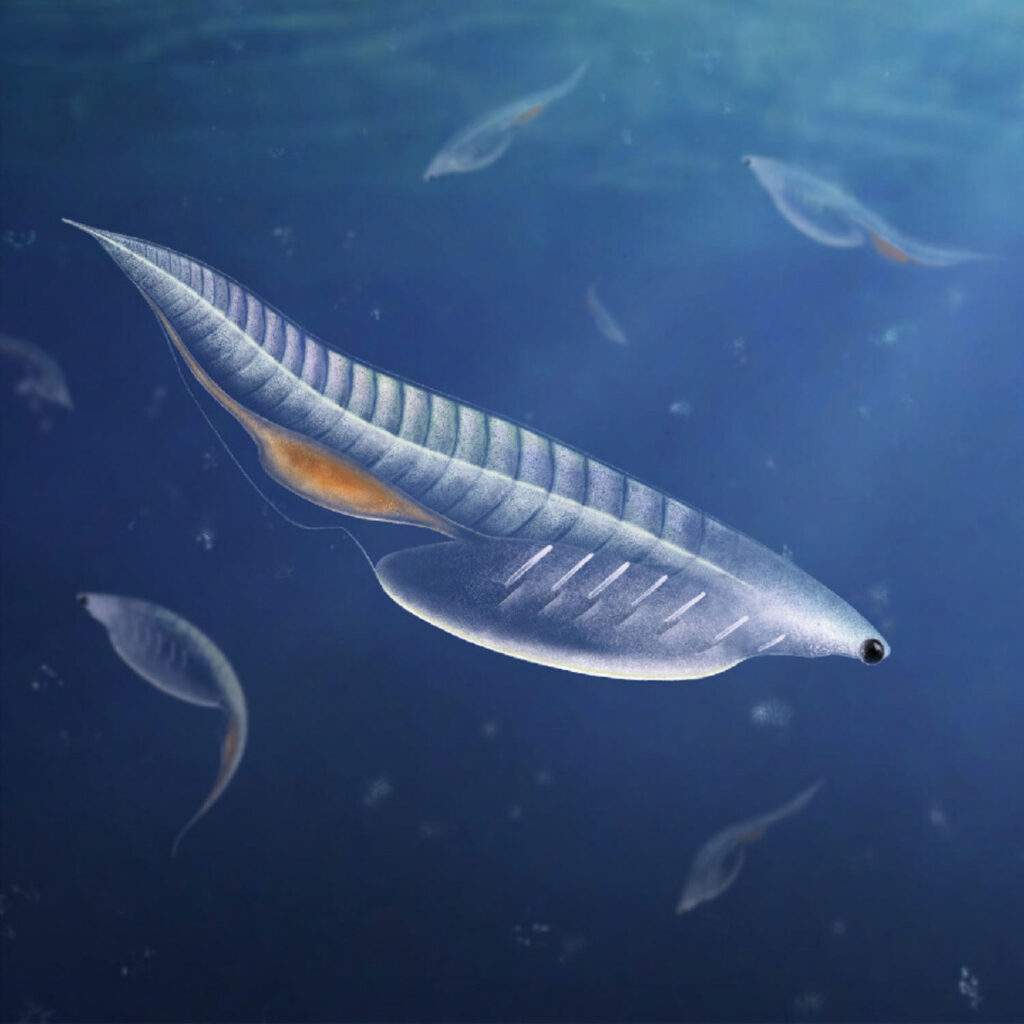
In Utah’s dinosaur-rich landscape, a minuscule fossil without bones or teeth might seem unimpressive. But this 500-million-year-old specimen is providing crucial clues about how animals like us developed backbones.
The newly discovered species, Nuucichthys rhynchocephalus (named after the Ute word for themselves, Núu-ci), lived during the Cambrian Period when animal life was exploding with diversity. Despite its age, it shows surprisingly sophisticated features that mark it as one of our earliest known vertebrate ancestors.
“It is what we call a ‘stem group’ species, which means that it already possessed some characteristics of modern vertebrates, but not all,” explains Rudy Lerosey-Aubril, the Harvard paleontologist who led the research.
The creature had large, complex eyes and specialized breathing structures, but notably lacked fins. This absence, clearly visible in the well-preserved fossil, suggests these early vertebrates weren’t strong swimmers but instead lived near the ocean’s surface, likely feeding on plankton.
The discovery makes Utah one of only a handful of places worldwide where such ancient vertebrate fossils have been found.
“Utah is home to an incredible paleontological archive,” remarks Lerosey-Aubril. “The Beehive State is renowned for its spectacular dinosaurs, but fewer people know that it is also one of the world’s most important regions for studying the origins of animal life.”
The fossil is now part of the Natural History Museum of Utah’s collection, where ongoing research continues to illuminate the dawn of animal life on Earth.



Comments
Comments are moderated, so there may be a slight delay. Those that are off-topic or deemed inappropriate may not be posted. Your email address will not be published. Required fields are marked with an asterisk (*).